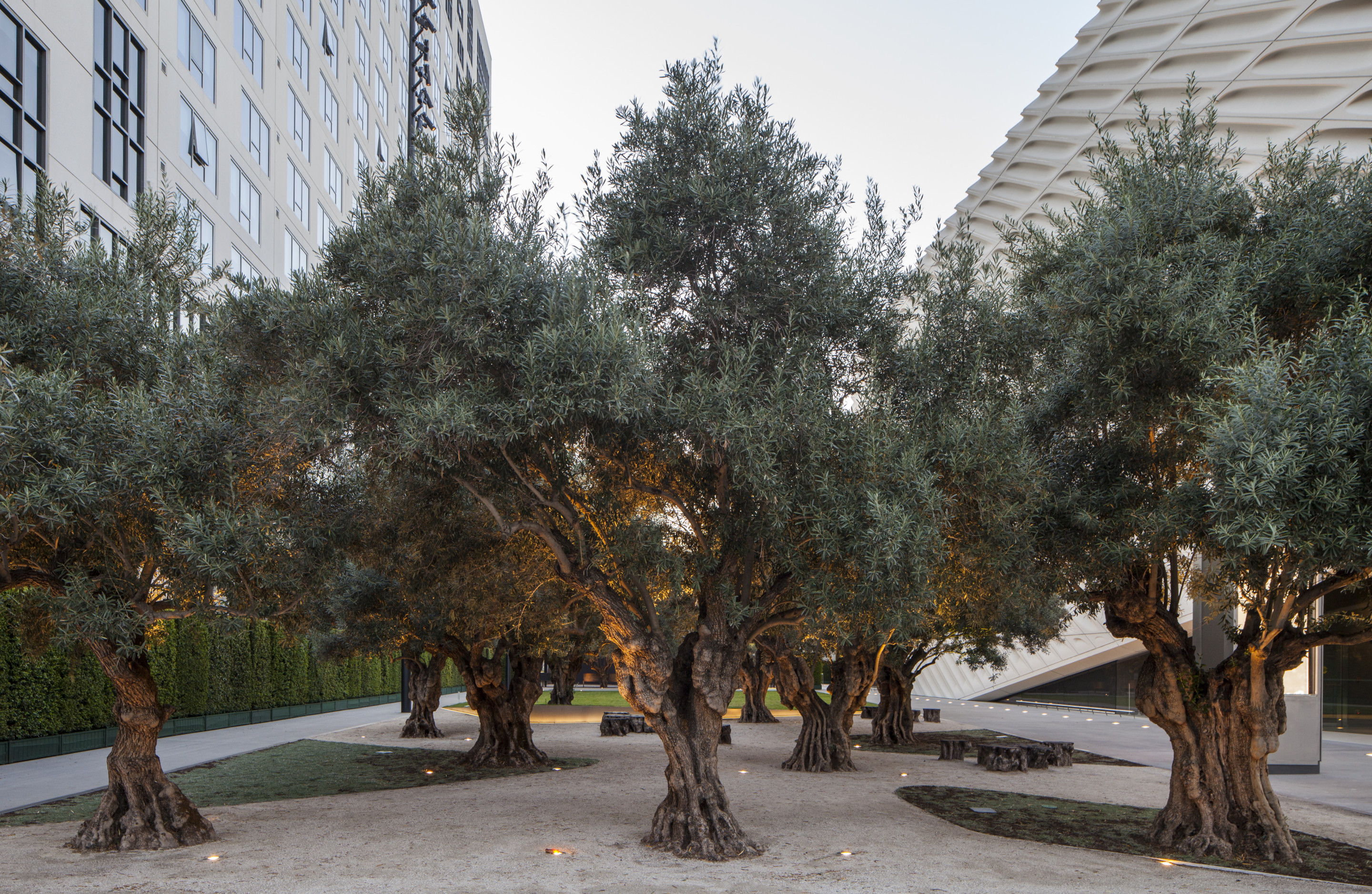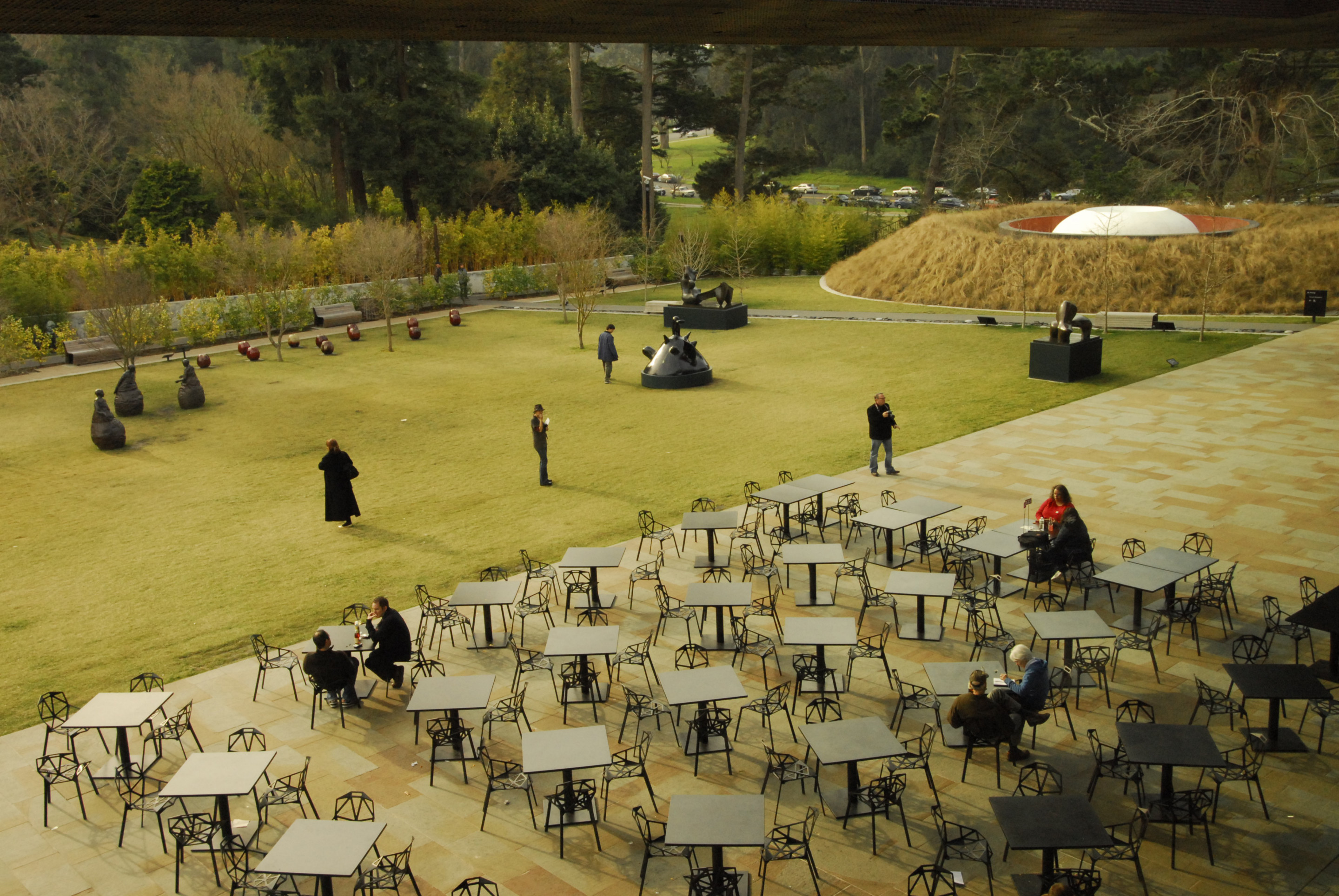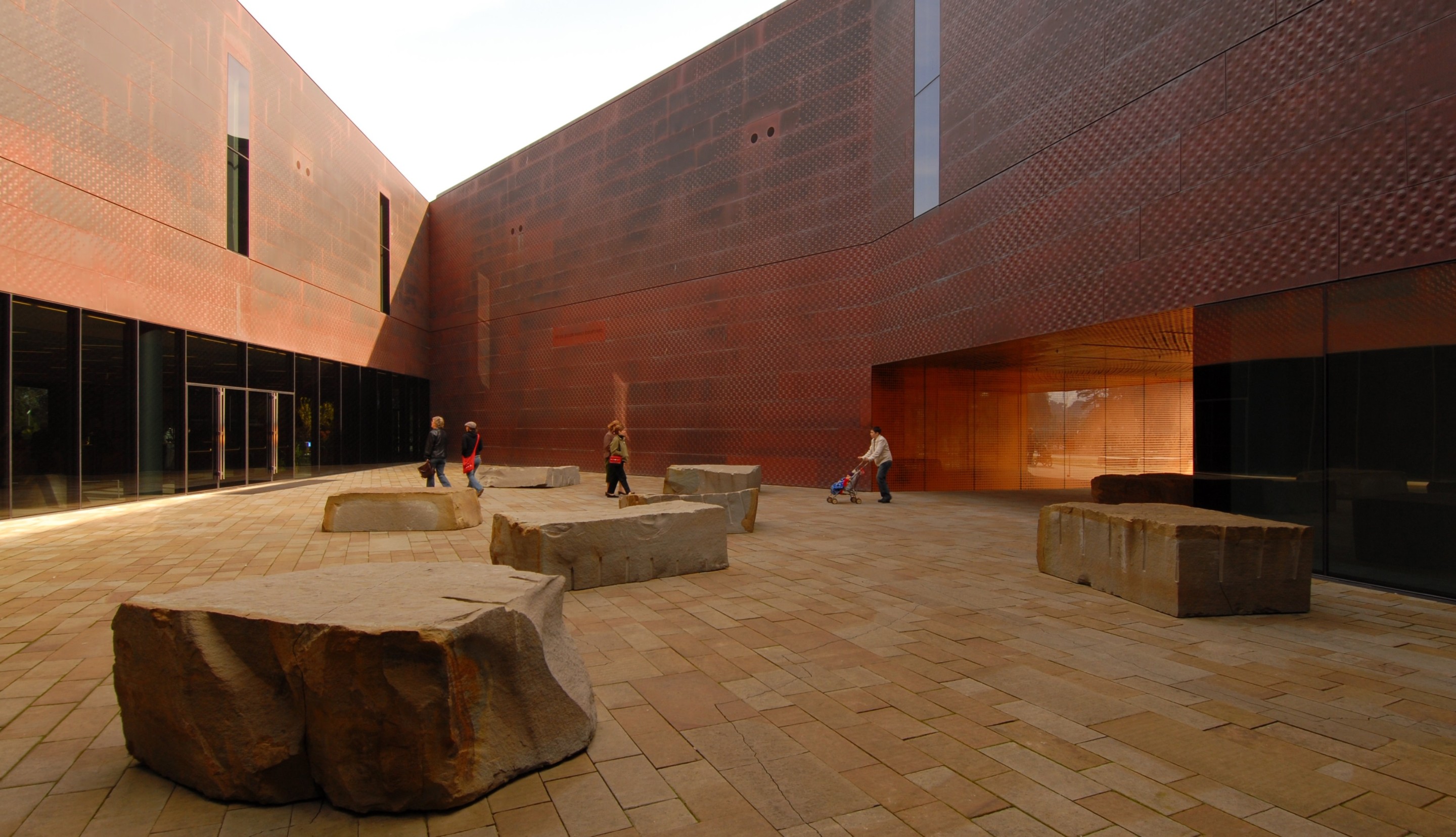Walter Hood speaks with AN about his practice and the role of reflective nostalgia today
You would be hard pressed to name a cultural or design award that Walter Hood hasn’t received. In the past three years alone, he has been honored by organizations as wide-ranging as the MacArthur Foundation (in 2019) and United States Artists (in 2021) to the Architectural League of New York, which bestowed its 2021 President’s Medal on him during a public celebration hosted at Marcus Garvey Park in Harlem. Hood, the founder of his namesake arts and landscape architecture practice based in Oakland, California, teaches at the University of California, Berkeley. He is also active as a writer and editor; in late 2020, he published Black Landscapes Matter, a compendium of histories, essays, and design strategies. AN contributor Keren Dillard sat down with Hood to discuss the problem with contemporary landscapes, the possibilities of Black spaces, and finding opportunity in nostalgia.
Keren Dillard: How did you get your start in landscape architecture?
Walter Hood: Even when I was very young, I thought I wanted to be an architect. I ended up going to North Carolina A&T State University, which had one of the first programs in landscape architecture at an HBCU [historically Black college or university]. I majored in architectural engineering before transferring into the landscape program and was in its first graduating class in 1981. That was my first foray into design, a pursuit I continued at graduate school at UC Berkeley. Later, when I started a practice in 1992, I wanted to be clear about what I wanted to say and use the work to allow me to articulate some core concerns and aspirations. By the time I reached my early 30s, I got to a place where I felt that I had gained all the knowledge that I could gain from my mentors and experiences. I knew that I had something to say.
What words would you use to describe the work of Hood Design Studio?
Complicated. Complex. Constantly shifting and changing. I think that there has been a way of stereotyping my studio by only saying, “Oh, Hood Design Studio? They do community participation or community work,” and in a way that is not true. For us, the studio is a cultural practice because we are interested in people and place, and that forces us to have processes that are constantly having to change in our approach. There are always going to be different places and different people in those places.

As people in places, our social conditions are generally what structure our experiences of the built environment. Would you agree that these “social landscapes” exert greater influence over us than do the “natural” landscapes typically affiliated with landscape design?
I don’t think that there is this dichotomy or that they are hierarchical. All landscapes are social if people are in them. When we think of the “social,” again, there are patterns and practices that change from place to place. I think that capital-A architecture typically affords people the luxury of not having to think about the ecologies in which they live. Therefore, their patterns and practices can end up being homogenous.
If architects and landscape architects were really interested in environment, then they would strive for people’s patterns and practices to reciprocate that context. Let’s say you live in a desert, in which case you should be mindful about the availability of water. How you inhabit that environment becomes—or should become—informed by resource scarcity. But if you were to look at landscapes in Arizona or Los Angeles or St. Louis, people’s patterns and practices are the same. Even if the physical land appears different, people still live in bad single-family houses and get in their cars and drive on freeways. This configuration is unique. At any other point in history, you could read the architecture and landscape of a place and understand people’s patterns and practices better than you can now.
What attitudes are preventing the creation of architectures that have the ability to accurately reflect people’s patterns and practices in their respective locations?
I think that it is a matter of understanding the legacy of the 20th century in design. We went through the industrial age and then the postindustrial age. This entire period was marked by a standardized approach to making things and allowed these things to permeate the world in various forms, be it the two-by-fours or commodities packaged into shipping containers. That mass production led to a world in which we didn’t have to think about place as much.
Now, thanks to technology, we can begin to think of place differently. The challenge is in being able to do it. We can take the “new normal” as an example, even if I don’t like that double negative. The pandemic caused me to become more connected to my neighborhood than I ever have in the past 25 years of living in a place. Technology allowed me to do that. It has also enabled me to resist the impulse to go back to driving everywhere. To me, if more people thought this way, then our roads could get smaller, and our public spaces could grow bigger. Suddenly, our infrastructural recourses would change. We need to push a little bit more to find where the opportunities exist that allow us to use technology to inhabit places and landscapes in ways that are more sustainable. The future will be about trying to figure this out.

One thing I took away from Black Landscapes Matter was the notion that Black experience in the U.S. is, as you put it, “diasporic” and not monolithic. We could call it a product of exclusion or a product of forced migrations—Black space is something that is constantly on the move.
That’s correct. I am from the South [North Carolina], and I have been up and down the Eastern Seaboard. Just traveling between D.C. and Philadelphia and Jamaica, Queens—even visiting family in Orange, New Jersey, as a child—was a mind-blowing experience. Something I understood from a very young age was that Black people exist in the landscape in diverse ways. Our experience in this country is rooted in agrarianism, and so I do think that we have a proclivity for looking at landscape and seeing it as a recourse to deal with trauma in a completely different way.
How might your projects be odes to Black spaces versus how much are they crafted around your personal experiences, which happen to be Black experiences?
It is a bit of both. I am not interested in the work of re-creating something that once existed, especially in the context of this country. I am not nostalgic for Jim Crow. I am not nostalgic for Reconstruction. I have been reading Svetlana Boym’s work The Future of Nostalgia, where she talks about the concepts of “reflective nostalgia” and “restorative nostalgia.” Reflective nostalgia has a role in shaping future possibilities. In that way I am nostalgic for Black space. Maybe 15 years ago, my view of nostalgia was a bit more pastiche and romantic, but now I realize that I do have a yearning for Black space. Now, I am working on developing ways to construct spaces where Black people can be together in revelry and not be fearful because of what that imagery might look like. You can be young and still be reflexively nostalgic because you are searching after something that hasn’t fully come into existence yet. It is not about re-creating the thing itself, but rather evoking a sensation or a feeling about a specific thing.

In reference to your earlier statements about the pandemic and nostalgia, I wonder if you think it’s possible to incorporate nostalgia into a post-pandemic scenario.
I can see spaces of reflective nostalgia in “the new normal” or whatever it is we’re calling it now. Already, we’ve been compelled to be romantic about those things from before the pandemic that we want to restore. This is restorative nostalgia, which explains how some people are nostalgic for the ’50s—for the nuclear family, but also for separation and segregation. People have these reference points, and as a designer, the trick is how you stay in this reflexive moment in which you can have a conversation with people in both camps: people who want to restore and people who want to be reflective. People are yearn- ing for things all the time, but how can we direct those desires? We need to use the reflective nostalgia of the past two years for getting to know your neighbors and for shared public spaces. As designers we should be on that right now.
Keren Dillard is a New York–based architectural designer and researcher, a graduate of Barnard College, and a current a Masters of Architecture candidate at Princeton University School of Architecture.


